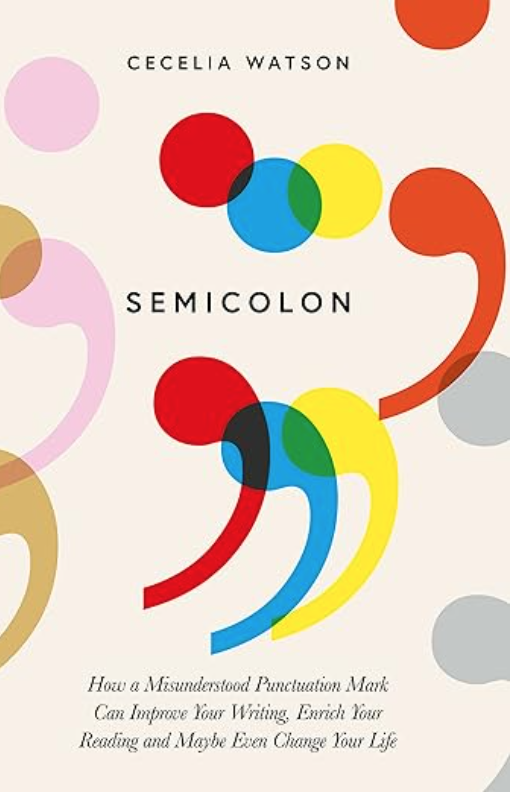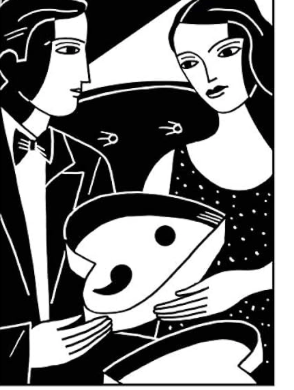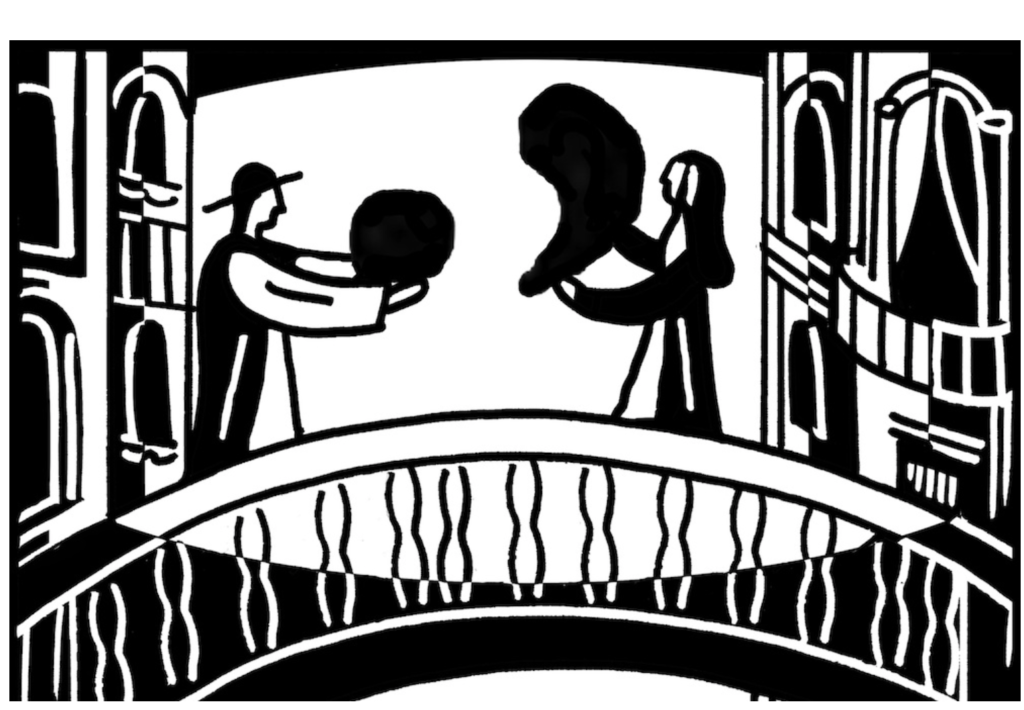Semicolon: The Past, Present, and Future of a Misunderstood Mark (2019) Cecelia Watson
Good Reads meta-data is 213 pages rated 3.67 by 2126 litizens.
Genre: non-fiction; species: grammar.
DNA: Pedantry.

Tagline: Is it semicolon or semi-colon?
Verdict: anti-climactic.
Tagline: Well, someone had to do it.
‘Class just for fun today let’s review the uses of the semi-colon. There are two principle uses: (1) to join two independent sentences as clauses and (2) in lists where items contain commas, the semi-colon can be used to mark off separate items.’
‘There is (3) another less common use for effect to insert a pause shorter than a colon. If a period is the longest pause of four beats, a colon is three, a semi-colon is two, and a comma is one.’
The effort to make grammar into a science has led to a proliferation of rules so that in the latest edition of that Bible of style, the Chicago Manual (more on this sacred text in a moment), there are now forty-six (46) rules governing the wedding of a dot and squiggle which is neither a period nor a comma but rather their unloved child. This proliferation of rules was ostensibly intended to clarify the use of the semi-colon but has only further shrouded it in mystery. Try reading these rules and you’ll see what I mean.
Author uses the semi-colon to chart the growth of grammar and its priestly attendants since the Eighteenth Century. The first English grammar books appeared in England and forced that unruly and irregular mongrel tongue into rules derived from Latin and Greek with parts of speech, clauses, cases, numbers, declensions, gerunds, conjugations, and the like. The rules propounded were policed by grammaristas who bludgeoned those who erred with weighty tomes on grammar seasoned with a superior smirk.
Sidebar: though not explored by the author, I wondered if this migration of grammar from Latin and Greek was one explanation for the long shelf life of those languages in British education.
By the middle of the Nineteenth Century there are hundreds and hundreds of these rule books on both sides of the Atlantic. Needless to say they contradicted one another on each side of the sea as well as across it. However, they did not included punctuation which had roamed free until that time.
Bringing punctuation into the fray was an innovation that gave a market edge for a time, but soon even more grammar books appeared with contradictory rules for punctuation. These explorers of the dark reaches of English usage proved their points by rewriting the past. Shakespeare, Milton, Chaucer were all corrected and revised according to the Nineteenth Century science of grammar.
Nor were contemporaries spared this policing. Mark Twain found the vernacular he used in his stories rewritten into correct English by a publisher. He was so incensed, the more so after his first protests were disregarded, that he composed a story, then took out the punctuation marks and listed them at the end, while inviting the publisher to insert the marks where he liked.
Henry James went further. He found American reviewers and publishers fastened onto his use of punctuation rather than the character, the plots, the events, the stories, drama, psychology, etc. To escape this pedantry he moved to England, where…. What do you know? More of the same.

He was so angered by such reviews that he refused ever to be interviewed by a journalist, despite frequent requests. Many seeing this declaration as a challenge tried but all failed. His one and only appearance before the fourth estate was at a fund raiser for the American ambulance service in the Great War. Of course even there a journalist did try to embarrass him about the semicolon!
In about 1906 the University of Chicago Press compiled a manual for in-house use. This was the first guide to grammar aimed at neither learners nor students, but at writers and editors. There was soon a grey market for it, and – delayed by World War I – it was published in 1921 as the Chicago Manual of Style, and I was suckled on it, starting with its school version (Kate L.) Turabian’s Guide. I have the current Sixteenth Edition of the Manual on the shelf behind me as I type. Taken together the contemporary editions of these two now total nearly fifteen hundred pages. My undergraduate copy of Turabian was ninety-five pages. The new edition is now four hundred plus pages. The forest is so dense that no trees are visible.
The semi-colon has also had its day(s) in court as judges mind-melded with black letter law to infer its meaning. I found all of this so much nonsense, but there it is.

Many writers explicitly avoid the semi-colon, like Ernest Hemingway, Stephen King, and George Orwell. On the other hand, it was an essential pediment for Henry James to build his cathedrals of words, Martin Luther King, Jr employed it for cadence in his speeches, and Raymond Chandler made it zing on the rare occasions when he used it.

It is true that James may have over done it because Author claims to have counted 4,000 semi-colons in one of his longer novels. It did sometimes take him a long time to get to the point. Why anyone would count semi-colons can only be explained by a PhD.
The book is enlivened with clever drawings at the beginning of each chapter. The prose is easy to read. Recommended for pedants.

